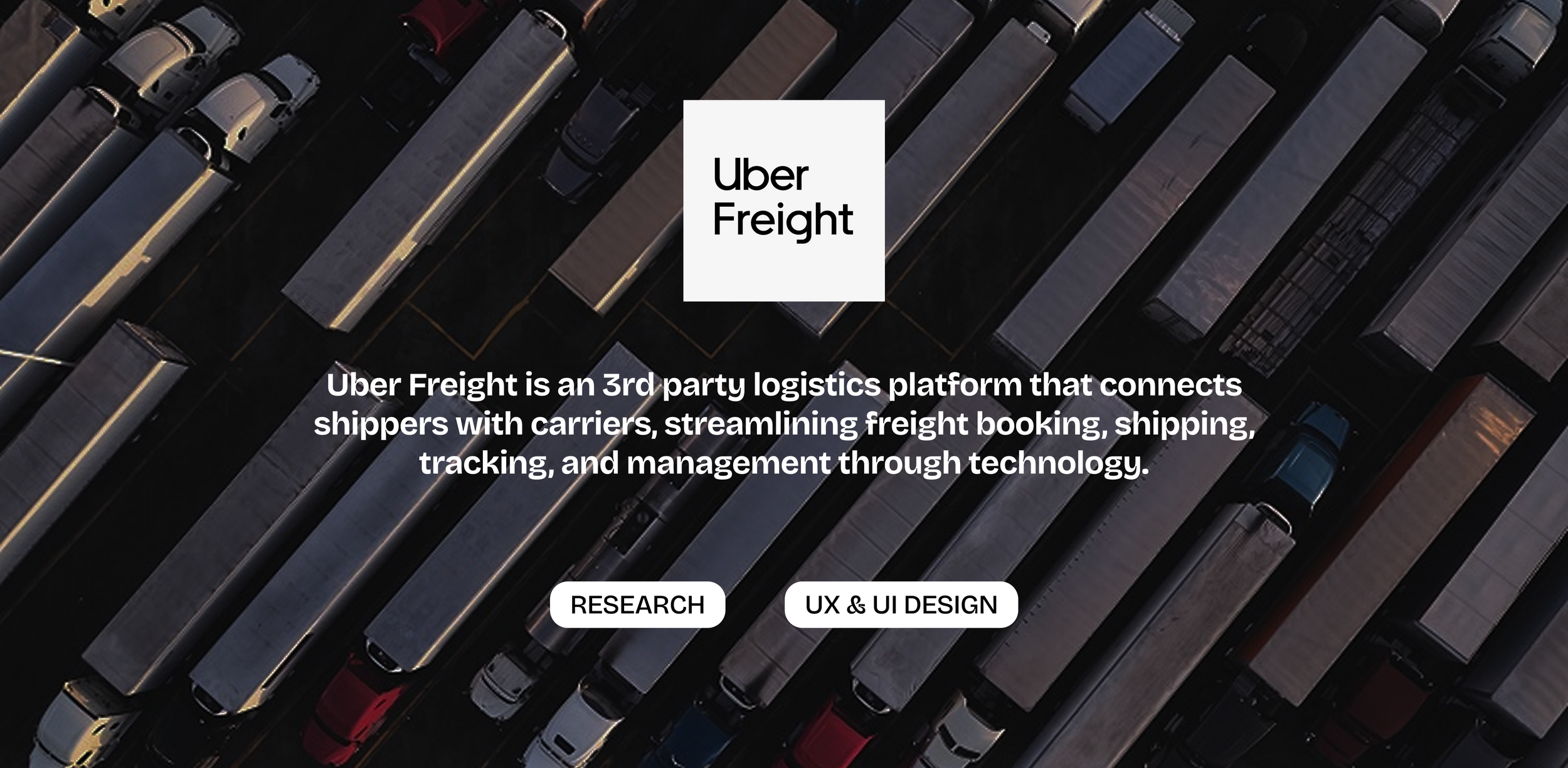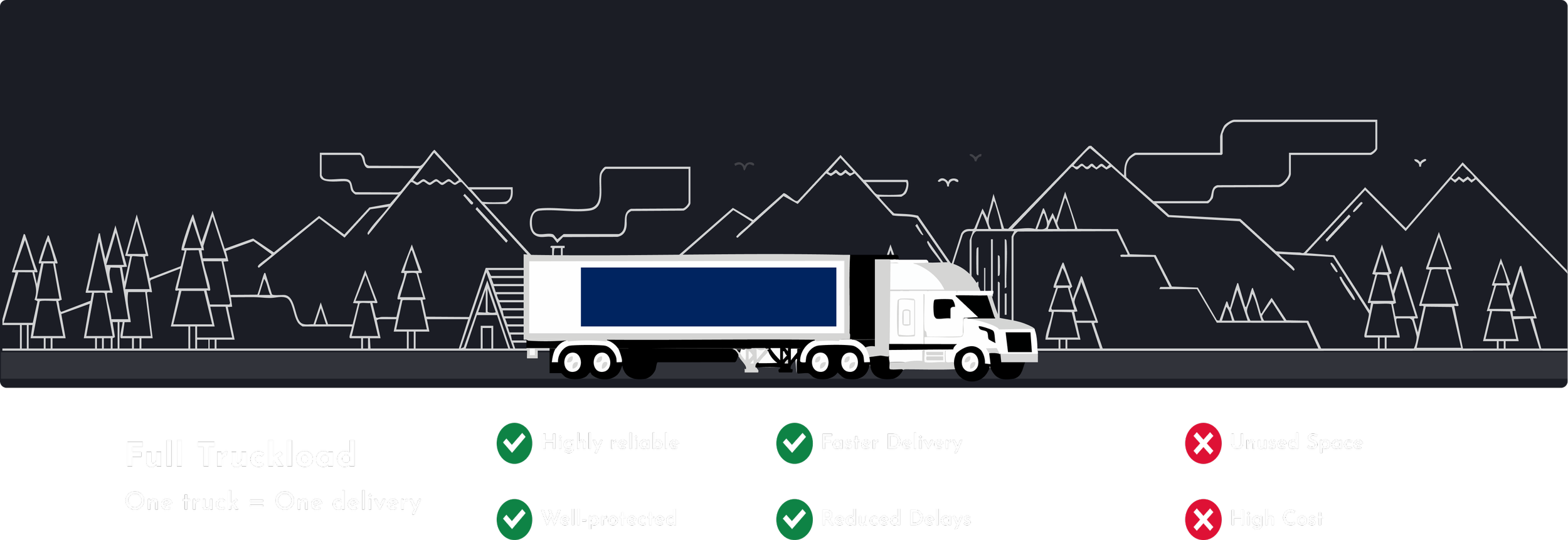Challenge
A major friction point in the freight industry, including Uber Freight, is empty miles -
when trucks travel with little or no cargo.
This inefficiency frustrates both shippers and carriers, wasting fuel, time, and capacity
while increasing costs and causing environmental damage.
Our goal was to minimize empty miles by Enhancing routing and load efficiency.
Solution
We enhanced routing efficiency by introducing multi-drop delivery — bundling multiple shipments from the same shipper into a single route to maximize truck capacity and reduce inefficiencies for both shippers and carriers.
Large-scale shippers
Decreasing shipping costs
Independent truck drivers
Maximizing earnings
Impact
10%
In user acquisition
In shipments frequency for large scale shippers
5%
15%
In revenue for carriers
and Uber Freight
Research
In-depth online research was conducted to uncover industry-wide friction points
around empty miles in freight logistics.
Further research explored operational challenges unique to the Uber Freight journey, uncovering gaps that could be optimized for improved efficiency and performance.
Key Insights
43%
of shippers send partially loaded trucks, wasting 55% of deck space on average
25%
of independent carrier mileage is driven empty or partially empty
$5B
annual losses across the freight industry due to driver shortage
Personas
The Shipper
Within Uber Freight’s Transportation Management System (TMS),
large-scale shippers often choose Full Truckload (FTL) to gain greater control
over timing, routing, and cargo safety.
While FTL offers reliability, it restricts each shipment to a single truck and destination, often leaving cargo space unused. This underutilization increases costs,
as shippers pay for the full truck regardless of how efficiently it’s packed.
User Flow
In the updated flow, shippers booking through the platform can unite multiple deliveries into a single route, starting from the same pickup point. Instead of booking separate shipments that leave unused space,
the new Multi-Drop Delivery flow guides users to add multiple drop-off locations within one truckload, maximizing capacity and reducing overall shipping costs.
Design
A toggle was chosen in order to reduce cognitive load and align with shippers’ workflows, ensuring that users not utilizing Multi-Delivery aren’t overwhelmed by unnecessary options.
Accordion cards were implemented to surface delivery details progressively,
offering real time, contextual feedback.
This familiar component, already used across Uber platforms, enhances usability, shortens the learning curve, and accelerates development through design system consistency.
The Carrier
Independent truck drivers use the Uber Freight app to efficiently filter and book loads based on route length, stop count, and payout.
Clear, structured load details enable faster, higher value decision-making,
helping drivers optimize routes and maximize earnings.
However, drivers face strict regulatory limits on driving hours, making time a critical asset.
With shipments usually restricted to a single pickup and delivery, earning potential is capped and leading to underutilized drive time and reduced efficiency per route.
User Flow
Multi-drop deliveries boost carrier earnings by increasing value per route.
To balance the added effort, carriers receive incentives, such as meal and lodging,
creating a more rewarding and motivating delivery experience.
Design
Orange was chosen as the primary color to visually distinguish multi-drop shipments - signaling both increased effort and higher earning potential.
Incentives, such as meals or lodging, are clearly shown in advance,
with costs automatically deducted from the payout, streamlining the experience
and eliminating the need for upfront payment payments during the trip.
This approach improves clarity, supports faster decision-making, and reinforces value through visual and functional consistency.
Customer Success Manager
Uber Freight’s Customer Success Managers support shippers and carriers
throughout the entire journey, from booking to delivery, ensuring smooth issue resolution, user satisfaction, and strong performance outcomes.
The Dashboard
The dashboard was designed to empower Customer Success teams with faster issue resolution
and context-driven support, ensuring user pain points are addressed in real time.
Special emphasis was placed on live emergency coverage, as disruptions in multi-drop shipments
carry higher impact across shippers, carriers, and Uber Freight.
Future Plans
Multi-drop delivery data will fuel smarter algorithms, streamlining route planning and enabling shippers to optimize load distribution and scale operations with confidence.








